#hickling broad
Text
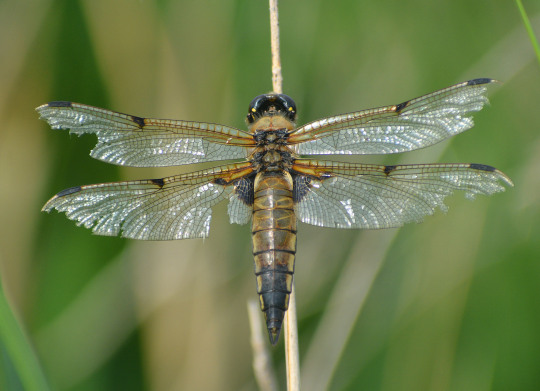


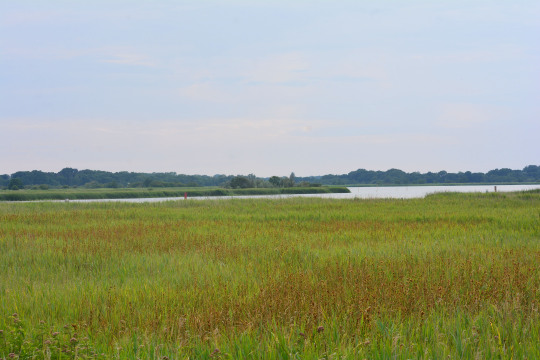
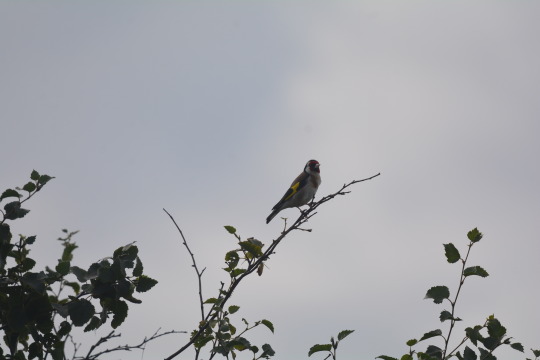
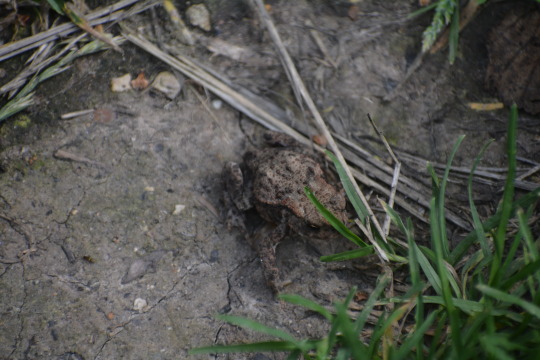




08/07/2023-Swallowtail and more at Hickling Broad
Photos in this set are of: 1. The dragonfly that caught my eye and us stopping to look at put us in the right place at the right time to see the Swallowtail, a dazzling insect to watch itself with its worn but still impressive wings glistening in the emerging sunlight, a Four-spotted Chaser. 2, 4, 8, 9 and 10. Views at this beautiful broads spot, I really enjoyed coming here last year and did again. A truly lovely place. 3. A key flower of the site which I very much enjoyed seeing, hemp agrimony. 5. Goldfinch. 6. A nice little toad we liked coming across. 7. A Black Clock beetle one of a few new insects I enjoyed discovering on the walk round this reserve.
Of course when it comes to other highlights this is dominated by one of my greatest ever wildlife watching moments, as that sensational Swallowtail emerged and heavily glided through the air; flashing its racy bright colours and grand, intricate and emblematic markings like a sightly cathedral on wings. This was such a big and long awaited moment for me, I can already see it's one of those moments I just want to replay in my mind over and over. It was an insect fest with my first Brown Hawkers seen from the off at the car park, rustic Ruddy Darter and Emerald Damselflies of the year alongside many Black-tailed Skimmers a smashing day for dragon and damselflies. Red Admiral, Peacock, Meadow Brown and Gatekeeper were other good butterflies to see. Fine caterpillars, Peacock butterfly and Garden Tiger moth moments after the Four-spotted Chaser and dream Swallowtail sighting furthered the delve into new species and little things of nature on the walk. It was a great one for birds too with typical Norfolk bird Marsh Harrier, Great White Egret, Little Egret, Grey Heron, Lapwing, Egyptian Goose, Pheasant, Reed Bunting and fittingly Swallow other key birds seen. Other flowers enjoyed on the walk were my first melilot of the year, bird vetch, yarrow, bindweed, nightshade, red campion, herb-Robert, pineappleweed, buttercup and honeysuckle. As we did when we visited last year on the way out we saw a Kestrel closely on a wire nearby. What a phenomenal day.
#swallowtail#hickling broad#norfolk broads#norfolk#england#uk#world#nature#butterfly#butterflies#marsh harrier#great white egret#swallow#ruddy darter#brown hawker#hemp agrimony#emerald damselfly#happy#lapwing#egyptian goose#birdwatching#insects#dragonflies#flowers#europe#2023
7 notes
·
View notes
Text
7th February
The Phantom Skating Drummer of Hickling Broad

Source: Ghost Catcher Isle website
In the misty evenings of February it is possible to spot the phantom skating drummer of Hickling Broad in Norfolk. In life the spectre was an army drummer who deserted his regiment before it was embarked to Belgium to face Napoleon in 1815. While keeping his head down, the errant drummer met and fell in love with a local lass from Potter Heigham. Naturally the lovers were forced to meet in secret, but their tryst was aided by a hard winter and the fact that throughout February Hickling Broad was frozen over, enabling the lovesick soldier to skate to his assignation with his young mistress at Swim Coots. Inevitably, as the weather imperceptibly turned milder, one night the thawing ice gave way under the drummer’s skates and the young man slid into the freezing water and was drowned. Thereafter, in the late winter in the Broad, the soldier can be heard, and seen, drumming a sad rhythm, allegedly to summon his long-dead girlfriend to a final night of love.
Hickling Broad is now a nature reserve.
1 note
·
View note
Text
Drumbeats of the Past: Uncle Gerald's Fateful Meeting with the Hickling Drummer Boy
Embrace the chill and dive into the eerie beauty of the Norfolk Broads with my latest blog post—a winter ghost story that will send shivers down your spine! 👻✨
(Phantom Drummer. Image Source: Bing Image Creator)
My step-uncle Gerald lived in the village of Hickling, nestled in the heart of the Norfolk Broadlands. He was one of the few remaining reed cutters, a job with a long, proud tradition in the area but sadly dying out as fewer people needed thatch for their homes.
(Gerald Nudd 1940-1999. Artist unknown. Image Source: ©E.Holohan)
It was back in…

View On WordPress
#drummer boy#drummer boy hickling broad#gerald nudd#ghost#ghost story#ghosts of norfolk#haunted#haunting#hickling#hickling broad#norfolk#norfolk broads#paranormal#potterheigham#reed cutter#spirit#swim coots#uk
0 notes
Text

Cycling in Hickling Broad but it could easily be somewhere else… 🇮🇹😍
3 notes
·
View notes
Text
Quickie - Day 2
Saturday, 21st September 2024
Wind NE 8mph Blue sky, lovely sunny day Temp 21°C
Total distance sailed 16.73 miles
We awoke to sunshine. Once up I went out to attempt to clear some of the moisture off our cover. It was saturated. I dried off the surface water and left the sun and the wind to do their work. After breakfast we moved the boat around so that the shady side would benefit from the sun and had coffee while we waited. Eventually realised that we would have to wait until about midday for the cover to be completely dry so gave up the struggle, folded it up and stored it in its bag. We shall have to take it home and spread it out there.
Left the mooring, raised sails and had a lovely broad reach/run across Heigham Sound and White Slea to Hickling Broad. A lovely run to the top of Hickling and then we turned and beat back before turning once again for another run. This time we went all of the way to the sailing club. Here we dropped sails and reversed into the Pleasure Boat dyke and moored up for lunch. Took Jimmy and Carolyn for a drink in the newly refurbished pub and then we all returned to the boats for lunch.
After lunch, Mrs Crew went for a walk with J & C while I stayed and dozed in the cockpit in the sunshine. When Mrs Crew returned (alone) we set off, raising sail as we departed. Then a long beat up the Broad and on towards Meadow Dyke. We attempted to sail up the dyke but, with the wind on the nose in such a narrow passage we resorted to the iron topsail. On reaching an empty Horsey Mere we beat across it towards Horsey Dyke. We could see other friends in there but decided that the effort required to drop sail, say hello and then re-hoist was not worth the effort. We turned and ran back across the Mere. Mrs Crew took the helm and sailed us down Meadow Dyke, across Heigham Sound and into Candle Dyke. We were head to wind here so dropped sail and continued under engine, dropping our mast and spars into low crutches as we journeyed. Mrs Crew then took us through the bridges and I raised the mast as soon as we were through. Continued under engine to Thurne Dyke where we reversed in and offloaded our damp cover into the car. Then across to the EACC moorings to moor up for supper. Moon Daisy came to join us and we ate together again.
Once supper was over and the washing up done, we slipped and headed back to our mooring, leaving J & C to spend the night on the mooring. Back on our mooring we cleared away and got the cover on. This was not easy in the dark but we managed. A lovely overnighter. Our last?
0 notes
Link
[ad_1] Conservationists are celebrating the return of a long lost breeding species to the Norfolk Broads. Three fledgling spoonbills have been born, the first chicks known to have hatched in these wetlands for around four hundred years. The protected birds, named after the shape of their long bills, which they use to scoop up food from mud flats – have nested at Hickling Broad. [ad_2]
0 notes
Text
Spoonbills return to Norfolk Broads for first time in nearly 400 years
Conservationists are celebrating the return of a long lost breeding species to the Norfolk Broads.
Three fledgling spoonbills have been born, the first chicks known to have hatched in these wetlands for around four hundred years.
The protected birds, named after the shape of their long bills, which they use to scoop up food from mud flats – have nested at Hickling Broad.
[…]
View On WordPress
0 notes
Text
Birdwatching in East Anglia: Exploring the Rich Avian Diversity and Habitats of the UK
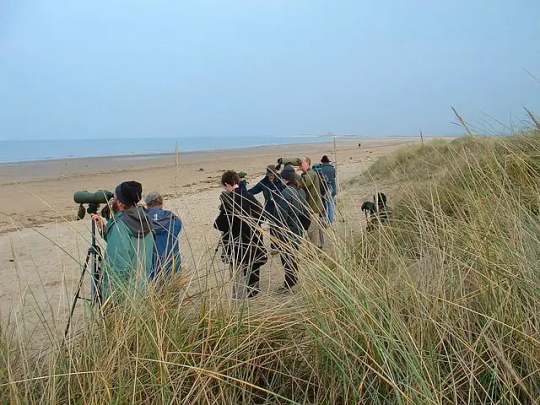
Welcome to the world of bird watching in East Anglia, UK. This region is renowned for its diverse range of bird species and habitats, making it a prime destination for avid bird watchers and nature enthusiasts.
East Anglia encompasses the counties of Norfolk, Suffolk, Cambridgeshire, and Essex. It boasts a unique blend of wetland, heathland, woodland and coastal areas that support a wide variety of birds throughout the year.
From majestic birds of prey such as the marsh harrier to rare wading birds like the avocet, there is something here for every birding enthusiast.

Male Bittern at Secker Hide, NWT Hickling. Photo by Nick Goodrum Photography. Flickr.
When to visit East Anglia
Whether you are an experienced birder or just starting out on your journey into this fascinating hobby, with over 300 species of bird, East Anglia offers plenty to explore and discover and there’s plenty to see whatever the time of year.
You can watch winter migrant birds along the coast and the spectacular raptors coming in to roost in the Broads.
In the spring, if you get up early, you can hear the dawn chorus in ancient woodlands, and in summer you can observe nesting peregrines on the Norman cathedral right in the heart of Norwich.

Reed Warbler West Canvey Marsh. Photo by Alan Shearman. Flickr.
Inland Habitats in East Anglia
Inland habitats may not always be the first place that comes to mind when thinking about birdwatching, but they are actually home to a surprising variety of avian species. From open fields and grasslands to forests and wetlands, these habitats provide food, shelter, and breeding grounds for many birds.
One example of a bird commonly found in inland habitats is the meadowlark. These brightly colored birds are often seen perched on fence posts or soaring over open fields, singing their distinctive songs.
Another common resident of inland areas is the red-tailed hawk. These large raptors nest in trees or on cliffs and can often be spotted circling overhead looking for prey.
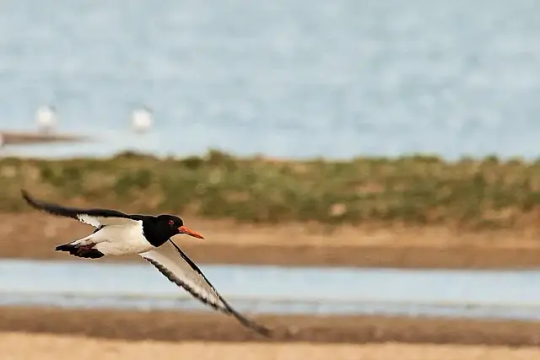
Oystercatcher - RSPB Minsmere. Photo by Airwolfhound. Flickr.
Wetland Habitats
In East Anglia, wetland areas attract avocets and little ringed plovers, both species that love the open islands of young wetlands for breeding. There is suspicion that the beautiful garganey, a migrant duck from Africa, bred in these local wetlands.
Winter flocks include wigeon, teal, gadwall, shelduck and great crested grebe, with some of these staying to breed. As the reedbeds grow, reed and sedge warblers begin to move in.
You can also find the marsh harrier, bittern and stone curlew in the East Anglia's wetlands alongside birds like kingfishers and geese.
Norfolk has a stunning range of bird life, and beautiful nature reserves. Cetti’s warblers sing loudly from rustling reedbeds and moustached bearded tits join the warblers with their pinging call.
Norfolk is a birdwatchers’ paradise and a wonderful place for children to begin to learn about their feathered friends. With child-friendly visitor centres and nature reserves, you’ll find all the help and information you need to get started.
Wetland environments such as marshes and ponds also attract species such as herons, egrets, ducks, and geese which all rely on these areas for feeding and nesting.
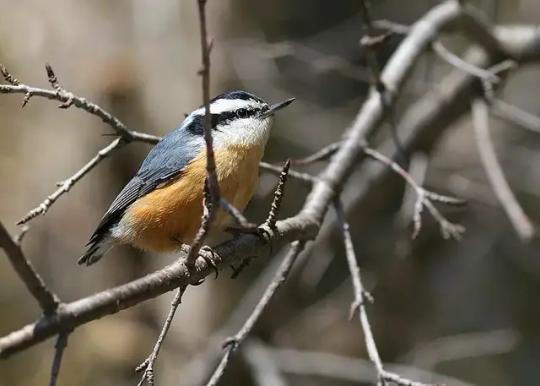
Red-breasted nuthatch. Photo by Matt MacGillivray. Flickr.
Best Birdwatching Spots
East Anglia boasts some of the best birdwatching sites in the UK, attracting both casual and serious birdwatchers from all over the world. If you are planning to visit East Anglia soon, here are some of the many top spots to consider:

Advocet. Photo by Sipris Swan. Flickr.
Cley Marshes Nature Reserve
One of the most popular places for birdwatching is Cley Marshes Nature Reserve. This reserve is situated on the north coast of Norfolk and stretches across 400 acres of land.
It hosts a variety of habitats including reed beds, salt marshes, shingle beaches and freshwater lagoons. These habitats attract different species including avocets, bitterns, marsh harriers and terns.

Pallas's Leaf-Warbler. Photo by Francesco Veronesi. Flickr.
Minsmere RSPB Reserve
Another great location for birdwatching is Minsmere RSPB Reserve which is located on the Suffolk coast near Aldeburgh. One of the most iconic birds in East Anglia is the avocet. These elegant wading birds are easily recognizable by their distinctive upturned bills.
They can be found in large numbers at RSPB Minsmere on the Suffolk coast, where they breed during the spring and summer months. Other coastal birds commonly spotted in this region include oystercatchers, redshanks, and dunlins.
The widest range of breeding birds in the country call this nature reserve home. If you want to hear the sound of nightingales, come in May, and you can also see the sand martin colony in the old car park.
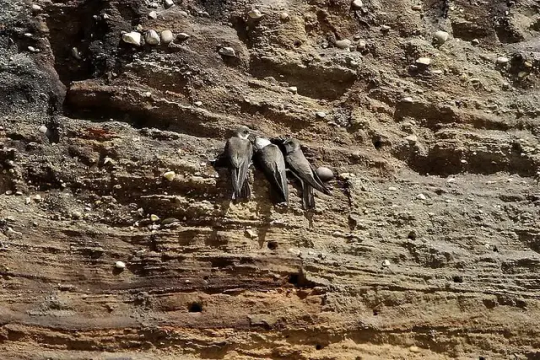
Sand Martins on a cliff face. Photo by Jo Garbutt. Flickr.
Holkham National Nature Reserve
Holkham National Nature Reserve was created in the late 19th century by the 3rd Earl of Leicester who planted pine trees on the dunes, creating a shelter-belt to protect the reclaimed farmland.
Today this ribbon of mature woodland still separates the vast expanse of dunes and flat sand from the farmland behind.
On the south side of the pine belt the mixture of deciduous trees and bushes provide excellent habitat for yellow browed and pallas’s warbler.
It was also the site for Britain’s only red breasted nuthatch, usually found in America. If you visit Holkham on a spring evening you can hear the croaking of natterjacks and at high tide it can be a good place to spot divers, grebes and sea ducks.
Conclusion
East Anglia offers birdwatchers an abundance of opportunities to observe a diverse range of avian species in their natural habitats. From the vast expanses of the Norfolk Broads to the rugged coastline of Suffolk, there is something for everyone.
With a little patience and some basic knowledge of bird identification, you can witness everything from rare migrants to resident species that are familiar but no less fascinating.
So why not grab your binoculars, head out into the great outdoors, and experience the joy of birdwatching in East Anglia for yourself?
You never know what feathered wonders you might discover!
Sources: THX News & The Tourist Trail.
Read the full article
#AvocetbirdsightingsEastAnglia#BestbirdwatchingspotsUK#BirdidentificationtipsEastAnglia#BirdspeciesinNorfolk#BirdwatchingEastAnglia#BirdwatchinginEssex#CoastalbirdwatchingSuffolk#NorfolkBroadsbirdwatching#RaremigrantsUK#TopbirdinglocationsSuffolk
0 notes
Text
Tuesday 20 September Ludham to Horsey
Well today was the day for the much anticipated assault on Potter Higham’s famously small bridge. We sighed in welcome relief in exit (with only a foot to spare) not just because of the bridge but it was notably quieter on the other side, the square plastic boats being unable to travel north. Hickling broad (we moored at Hickling Heath to explore for an hour ) and then the exquisite tranquility of Horsey mere. We stayed within a stones throw of the Mill and walked to the Nelson Head pub where despite interrogation, the Landlord refused to accept or deny whether Horatio had ever drunk there.




0 notes
Photo

1 June | Ghost Calendar
‘Hickling Broad, Norfolk (already boasting a recurring phantom in the shape of a drummer boy, see 15 February) is reputed to be the scene of a ghost voice once a year... Visitors to the peaceful banks of this marsh-lined stretch of water have reported hearing a woman’s voice, soft and caressing, rising and falling on the gentle breeze that hardly stirs the surface of the water. The voice has even been recorded on tape, or so I have been told...’
The Ghost Hunter’s Guide Google Map
Audible UK | US | Trailer | Kindle Unlimited: UK / US
peterunderwood.org
2 notes
·
View notes
Text
It’s all about the wildlife today #birdhide #potterheigham #norfolkwildlifetrust #december2020 https://youtu.be/5A6Sa0Ol_-U
youtube
#wildlife#norfolk broads#youtube#travel photography#travel#holidays#traveling#staycation#nature#please subscribe#new video#norfolk broads youtuber#wild birds in norfolk#Norfolk wildlife trust#potter heigham#Hickling Broad#Marshes#marsh harrier#stonechat#robin#swans flying#Slavonian grebe
1 note
·
View note
Photo










Second post of my wildlife and photography highlights of the year posts: Ten of my favourite butterfly themes and moments this year
A brilliant year of seeing Speckled Woods
I saw so many throughout the season, locally at Lakeside and even at home with one in the garden and further afield, what a treat. I took the first picture in this photoset of one at Lakeside in April.
Blog at the time: https://dansnaturepictures.tumblr.com/post/681176478479777792/10042022-speckled-wood-and-bee-fly-in-the-back
Seeing the first summer species, particularly at Lakeside
It’s always exciting when the species of butterfly seen tell me summer is nearing or here, seeing the likes of Meadow Brown, Marbled White, Large Skipper, Ringlet, Small Skipper and later after seeing my first of the year elsewhere Gatekeeper emerge at Lakeside and Silver-studded Blue, Dark Green Fritillary, White Admiral and Silver-washed Fritillary elsewhere defined an exciting and hopeful period of my year. Later on some of these species and others were stars in another Big Butterfly Count I loved doing so much at Lakeside and loads of other varied places this summer. I got the second picture in this photoset of my first Small Skipper of 2022 at Lakeside in June and third of a Ringlet at Lakeside during the heatwave in July.
A blog at the time: https://dansnaturepictures.tumblr.com/post/688155539735199744/26062022-west-wood-and-some-bits-at-home-on-the
Brown Argus at Lakeside
One of my most thrilling butterfly moments this year with one of my favourite species and a strong Lakeside moment of my year. I took the fourth picture in this photoset of it.
Blog at the time: https://dansnaturepictures.tumblr.com/post/684530182194905088/17052022-brown-argus-and-more-at-lakeside-and
Seeing my first Adonis Blue, Green Hairstreak, Marsh Fritillary and Grizzled Skipper of the year and many more butterflies at Martin Down in May
One of my butterfly days of the year, well into spring it felt it all came together a bit. I took the fifth picture in this set of a Green Hairstreak that day.
Blog on the day: https://dansnaturepictures.tumblr.com/post/684896421888000000/21052022-post-1-of-3-martin-down-the-wildlife
Purple summer days: Seeing Purple Emperor and Purple Hairstreak at Knepp on an incredible day of butterflies then seeing a Purple Hairstreak at my local Lakeside the following Friday starting off another amazing summer of me seeing them here multiple times with Purple Hairstreaks I saw at other sites across the country too.
The sixth picture in this photoset is a record shot of a Purple Hairstreak at Lakeside.
A blog about it at the time: https://dansnaturepictures.tumblr.com/post/689243220759232512/08072022-summers-day-at-lakeside-and-home
The Clouded Yellow dream
Two balmy summer days where I got excellent views of what is for me one of our most iconic and alluring species the Clouded Yellow at Magdalen Hill and Old Winchester Hill, seeing more than I ever had at once in those days two weeks apart. I saw them at Pig Bush in the New Forest and RSPB Radipole Lake where I took the seventh picture in this photoset of one in September and at Lakeside in October too.
Blog at the time: https://dansnaturepictures.tumblr.com/post/690692590519156736/24072022-clouded-yellow-and-more-at-magdalen
Seeing standout species in my year in high summer: Silver-spotted Skippers at Old Winchester Hill, the most Lulworth Skippers I’d ever seen at once at Durlston one shown in the eighth picture in this photoset, Wall Brown there and at Shipton Bellinger, many Chalkhill Blues at Stockbridge Down, Old Winchester Hill, Martin Down and Magdalen Hill and Common Grayling at Whitefield Moor in the New Forest.
More big species for me that I was lucky to see at wonderful places over this unforgettable hot and sunny summer, some of the most incredible moments of my butterfly year.
A post at the time: https://dansnaturepictures.tumblr.com/post/691960668939747328/7822-post-1-of-2-old-winchester-hill-this
My first ever Essex Skipper seen at Hickling Broad in Norfolk
A massive moment in our Rutland via Norfolk summer weekend away for the Global Bird Fair and something I’d wanted to see or be sure I’d seen for so long. I took the ninth picture in this photoset of it.
Post about it at the time: https://dansnaturepictures.tumblr.com/post/690136291495526400/15072022-part-2-of-2-hickling-broad-we-then
Small Pearl-bordered Fritillaries at Fen Bog Nature Reserve
A sensational time with a species I have taken to heart and been so lucky to see the past few years, a strong bonus moment of our Yorkshire holiday in June. I took the tenth picture in this photoset of one.
Blog on the day: https://dansnaturepictures.tumblr.com/post/687883350443212800/23062022-blog-two-of-two-fen-bog-nature-reserve
Seeing Brown Hairstreak at Shipton Bellinger in early September, putting the icing on the cake of my butterfly year as my 45th species seen this year making my year list my joint highest ever.
Blog on the day: https://dansnaturepictures.tumblr.com/post/694403122026758144/3922-brown-hairstreak-and-more-at-shipton
#photography#wildlife#nature#uk#butterflies#clouded yellow#green hairstreak#brown hairstreak#purple hairstreak#silver-spotted skipper#small pearl-bordered fritillary#45#essex skipper#small skipper#purple emperor#lulworth skipper#shipton bellinger#martin down#fen bog nature reserve#hickling broad#lakeside#godshill#new forest#silver-studded blue#lakeside country park#spring#summer#2022#europe#dorset
3 notes
·
View notes
Text
We spent today at the Norfolk Wildlife Trust reserve at Hickling Broad. The Broads is an area of ancient peat digging which has flooded and formed a connection with local waterways to form a network of lakes. It is very popular with people in boats, but it also a wonderful wild habitat as much the surrounding land is not accessible.
At the visitor centre, we had a wonderful view of a Hornet’s nest in the roof and could appreciate its fantastic structure.
Were were fortunate to be able to spend two hours travelling around the reserve by boat through narrow ways through the reeds and on the open water to visit parts of the reserve which cannot be accessed from the land.
Ringed Plover and Dunlin
Canada Goose [sp] (Branta canadensis)
Greylag Goose [sp] (Anser anser)
Mute Swan (Cygnus olor)
Egyptian Goose (Alopochen aegyptiaca)
Common Shelduck (Tadorna tadorna)
Eurasian Wigeon (Mareca penelope)
Mallard [sp] (Anas platyrhynchos)
Eurasian Teal (Anas crecca)
Grey Heron [sp] (Ardea cinerea)
Great Cormorant [sp] (Phalacrocorax carbo)
Western Marsh Harrier [sp] (Circus aeruginosus)
Common Moorhen [sp] (Gallinula chloropus)
Eurasian Coot [sp] (Fulica atra)
Northern Lapwing (Vanellus vanellus)
Common Ringed Plover [sp] (Charadrius hiaticula)
Little Ringed Plover [sp] (Charadrius dubius)
Ruff (Calidris pugnax)
Dunlin [sp] (Calidris alpina)
Common Snipe [sp] (Gallinago gallinago)
Black-headed Gull (Chroicocephalus ridibundus)
Common Wood Pigeon [sp] (Columba palumbus)
Common Kestrel [sp] (Falco tinnunculus)
Peregrine Falcon [sp] (Falco peregrinus)
Eurasian Blue Tit [sp] (Cyanistes caeruleus)
Barn Swallow [sp] (Hirundo rustica)
Long-tailed Tit [sp] (Aegithalos caudatus)
Western Yellow Wagtail [sp] (Motacilla flava)
White Wagtail (Pied) (Motacilla alba yarrellii)
Common Chaffinch [sp] (Fringilla coelebs)
Norfolk Journey 2018: Day 13 We spent today at the Norfolk Wildlife Trust reserve at Hickling Broad. The Broads is an area of ancient peat digging which has flooded and formed a connection with local waterways to form a network of lakes.
0 notes
Photo

A few shots from a morning exploring @broadsnationalpark discovering these rustic thatched boat houses and look out towers among the reeds. Shooting for @nationalparksuk this time last year. #broadsnationalpark (at Hickling Broad) https://www.instagram.com/p/Bvr2VCRhloU/?utm_source=ig_tumblr_share&igshid=1ugf34wcny4dk
10 notes
·
View notes
Photo

Fairies And Dragons (at Hickling Broad) https://www.instagram.com/p/CSAe4LaqG_Z/?utm_medium=tumblr
0 notes

